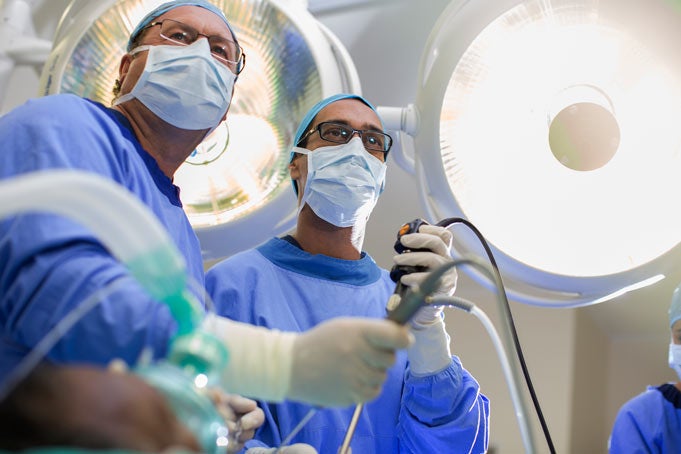What are the different methods of surgery?
Surgery doesn't always mean large cuts (incisions) and long healing times, as in the past. Depending on the type of surgery, several methods may be used. People with the same diagnosis won't always be advised to have the same surgical method. Your surgeon will talk with you about the best approach for you and the reasons why.
Open surgery
An open surgery means cutting the skin and tissues so that the surgeon has a full view of the structures or organs involved.
Minimally invasive surgery
Minimally invasive surgery is any surgery that doesn't need a large incision. This approach offers faster recovery and less pain than open surgery. Not all conditions are right for this approach. It can be used to evaluate illnesses and injuries. It can also be used to take tissue samples and make repairs. This type of surgery includes procedures, such as:
-
Laparoscopy. This procedure uses a tube with a light and a camera lens at the end (laparoscope) to look at organs in the belly (abdomen). It's often used to look inside the belly without making large incisions. Tissue samples may also be taken for examination and testing.
-
Robotic surgery. This procedure is similar to laparoscopy except the surgeon does not manually move the surgical tools. The surgeon uses a computer to move the surgical tools. And they see the inside of the body with a 3-D monitor. This allows for greater precision, smaller cuts, and less healing time.
-
Endoscopy. This test uses a small, flexible tube with a light and a camera lens at the end (endoscope). It's used to look at the inside of the hollow organs of the digestive tract. Tissue samples may also be taken for testing. Endoscopy may be used on the stomach (gastroscopy), the esophagus (esophagoscopy), and the colon (sigmoidoscopy or colonoscopy).
-
Arthroscopy. This is used to look inside a joint with the use of a scope (arthroscope). It's most often used to inspect and possibly repair the inside of the knee, shoulder, or hip joint.
-
Bronchoscopy. This is the exam of the main airways of the lungs (bronchi) using a rigid or flexible tube (bronchoscope). Bronchoscopy helps assess and diagnose lung problems. It also helps assess blockages, take samples of tissue or fluid, or help remove a foreign body.
-
Thoracoscopy. This is minimally invasive surgery in the chest cavity.
-
Cystoscopy. This procedure puts a viewing tube to look at the urethra and bladder cavity.
-
Hysteroscopy. This is used to look at the cervical canal and uterine cavity with an endoscope.
-
Laryngoscopy. This is used to look at the voice box (larynx) with a mirror or viewing tube.
Featured in


